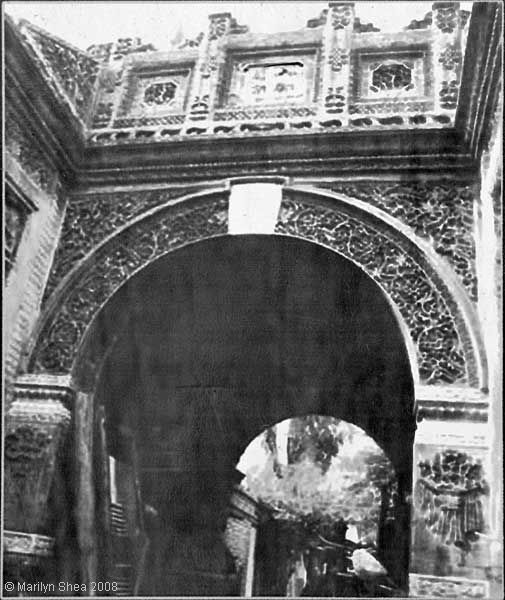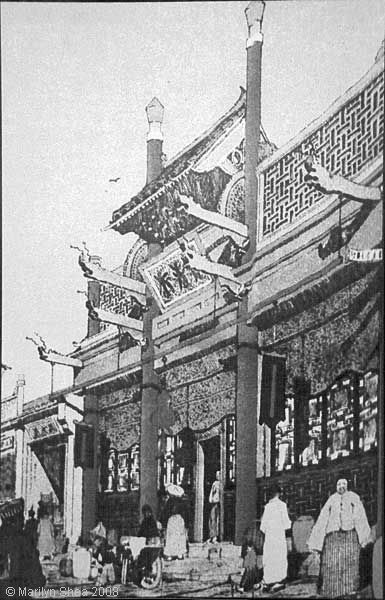 |
|
This is a classic gate entrance dating to the 1500s, during a growth period of the Ming Dynasty. The roots of the economic expansion began in 1289 in the Yuan Dynasty. The Grand Canal was completed and boats from the south could sail to Tongzhou. Tongzhou is now a county in the southeast of present day Beijing, a distance of about 30 miles.
That was still quite a distance from Dadu, the capital of the Yuan Dynasty, which was located in what is now central Beijing. During the Yuan Dyansty (1271-1368) the Zhuyuan emperor had Guo Shoujing 郭守敬 (Guō Shǒujìng), the great mathemetician, astronomer and engineer, construct the Tonghui River in 1292. It only took a year to build the new river to connect the Grand Canal with Dadu, and thus with the south of China. Goods and people could travel to and from Hangzhou, Suzhou, Nanjing, and the coast. It connected Beijing with the Jiangnan region, the region south of the Yangtze, which remains the richest region in China. In 1368 the Ming Dynasty overthrew the Yuan Dynasty and settled in Nanjing and made that the capital, rather than Dadu. That is, until the Yongle Emperor (1403-1424) decided to relocate back to Beijing for political reasons. He had a new city built. Much of what was left of the city by the Yuan was destroyed in the process, but the Grand Canal and its link to Beijing were improved and repaired from 1411 to 1415. The city itself was under construction for 13 years, from 1407 to 1420. The Grand Canal and Guo Shoujing's river allowed construction materials and food to be brought from the south to the new city. Later, it would bring the rest of China to Beijing and allow the Emperor to control both the north and south of China, thus uniting them. By the 1500s the Qianmen district was teeming with traders from Jiangsu, Fuzhou, Anhui, Guangdong, and Guangzhou who traveled the water route. They began to establish more permanent bases and businesses in the capital. But they spoke different dialects, had different customs, and liked different foods. Between 1522-1567 hometown meeting halls began to be established. These hometown meeting halls are called会馆 Huiguan. They were gentleman's clubs, tea houses, an opera house or two, and some served as hotels. The businessmen would band together to create an elaborate and rich environment in which to stay and to impress other trading partners. You could meet with people who spoke your language; people from your hometown. The gate shown above is one example. By 1949, there were 585 Beijing hostels, 18 inside the city walls and the others were outside the walls. In the Qianmen area, most of them were built on the east side of what is now Qianmen Dajie, in the Cao Chang Hutong, Dajiang Hutong and the Xiaojiang Hutong. The west side of Qianmen Dajie was more commercial. In the China towns of the United States, social clubs such as these were also established. They were a place to go to make connections, play games, and get a helping hand. Many still function today. Below, the drawing of a store front from the Qing Dynasty era (1644 to 1912) illustrates the use of the gate as an entrance. |
 |
http://hua.umf.maine.edu/China/HistoricBeijing/Qianmen/index.html
Last
update: August 2009
© Marilyn Shea, 2009